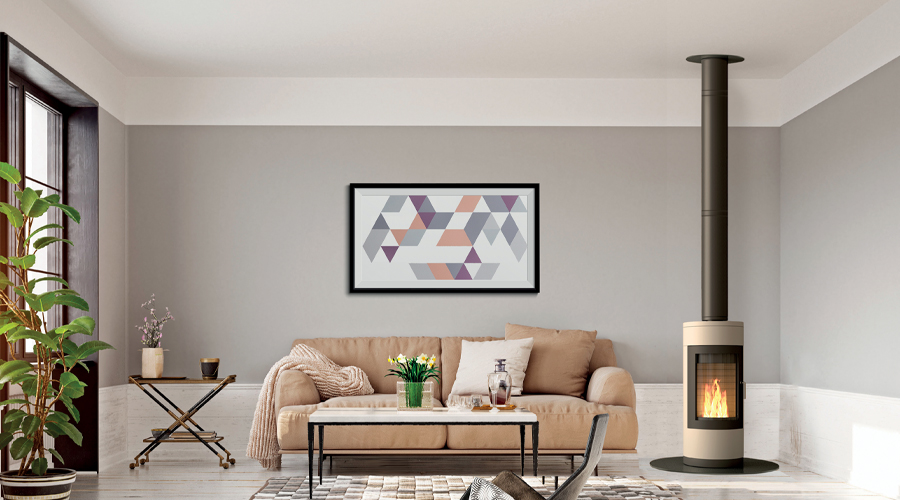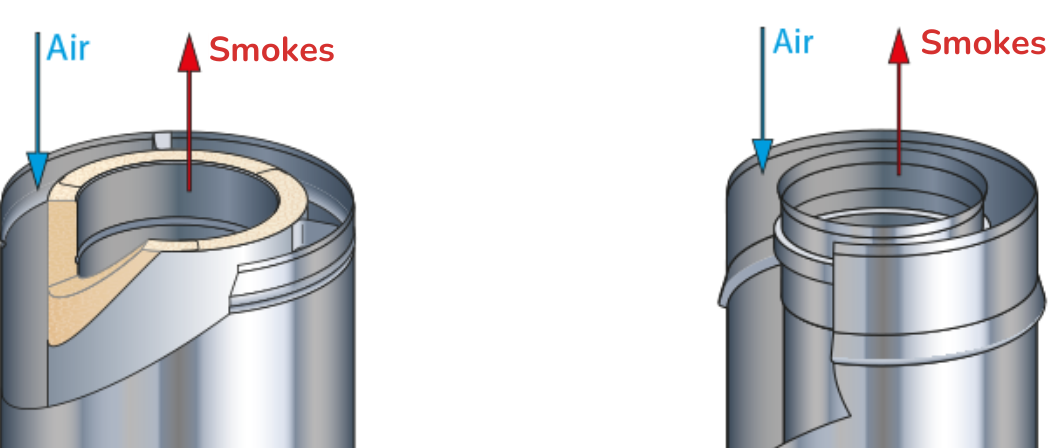What type of heating system should I choose for a house extension?
Extending a house necessarily raises the question of its heating system. Should you rely on the central heating system and extend it into the extension? Should you install additional heating? The answer(s) will depend on a multitude of factors. Rest assured, there are many solutions, including wood, which is as competitive and versatile as ever.

Extension heating: how do you choose?
The challenge is to find the best formula for satisfying your desires while complying with technical and regulatory constraints.
- The heating system for the extension must be adapted to the new space and its lifestyle. Whether it's a new office, a new bedroom, a relaxation area, a living room, a conservatory, etc., the answer will obviously not be the same.
- The technical framework imposes its constraints. The surface area of the new space, its configuration and its location in relation to the existing one will make it more or less possible to connect to the heating network already in place in the house. In addition to the connections, the production capacity required to heat the new space will also be a determining factor.
- The extension's heating system must also meet local regulatory requirements when it becomes visible from the outside. If the heating system you are planning includes the installation of a roof outlet (even a roof outlet on standby), a heat pump (PAC) or solar panels, it is important to anticipate these and include them in the plans to be submitted to the planning department.
All that remains is to find the solution that satisfies both your own preferences and the requirements of the setting. In all cases, don't hesitate to compare and discuss with the architect and various craftsmen to identify the advantages and disadvantages of a particular solution.
Is the current heating system sized to absorb the additional production load?
At first glance, connecting to the heating system already in use seems to be the simplest and most economical solution. No need to invest in a new generator, and potentially less work... It remains to be seen whether this installation can cope with the increased load that the extension will impose.
It's important to have this option assessed by a qualified professional before the project begins, to avoid any unpleasant surprises during the work, or later, when the system is used in ‘real-life’ conditions.
Is the existing energy supply best suited to the extension?
The energy used in the rest of the house is not always the most appropriate for a new extension. Because the construction method may not be identical, because the thermal insulation is probably better, because the new volume to be heated requires the installation of a new, more powerful central heating appliance, or because the expected level of comfort is different. In short, the question of the choice of energy (and the associated generator) arises.
How do you assess the relevance of energy?
Here are some different criteria. Some may seem less objective, but the choice of energy is always tinged with a certain amount of subjectivity inherited from one's own experience, word-of-mouth, apriori and so on. :
- Is it renewable energy (RE)? Wherever possible, renewable energy sources should be preferred to fossil fuels.
- What level of comfort does it provide? Thermal comfort, atmosphere, ease of use and maintenance...
- Does the price of this energy and its evolution make it possible to calmly control future expenditure?
- Does the choice of energy add value to the property? Energy mix, sustainability, aesthetics...
- Is this energy compatible with the space available? Or can it radiate heat to other rooms in the house?
Extension: advice from Cheminées Poujoulat
It is, of course, essential to include the heating aspect from the outset of the extension project to avoid any additional costs or subsequent work on the building.
If connection to the central heating system is not possible, the ‘independent heating appliance’ option may be activated. Installing a log or pellet stove offers a number of advantages:
- Complementing other energies in the home is the energy mix we regularly talk about. It's a way of reducing dependence on a single energy source.
- The addition of a renewable energy source to the home's energy mix... not insignificant when it comes to adding value to a property.
- The efficiency of a high-performance heating system, with energy savings as a result.
- The comfort of a customised wood-burning appliance, because there are different power ratings, sizes and designs to suit every need.
- Controlling energy costs. As well as being a renewable energy source, wood is also the cheapest energy on the market.
How do you incorporate wood energy into an extension?
- With EFFICIENCE and PGI flues, the stove goes where you want it to!
The two EFFICIENCE and PGI flue systems designed by Cheminées Poujoulat are not subject to the 40 cm ridge overhang rule defined by NF DTU 24.1. These concentric flues, which have been designed respectively for airtight wood stoves and pellet stoves, manage both the supply of combustion air to the appliance and the evacuation of combustion smoke.
Both offer a great deal of freedom when it comes to setting up in the home, and make it possible to integrate a wood or pellet appliance in configurations where overhanging the eaves is a problem, or where the air supply is complicated. In other words, solutions that are completely compatible with a new conservatory, living room, large living room, games room or dining room:

Find out more about EFFICIENCE Find out more about PGI
for sealed wood-burning stoves for sealed pellet stoves
- There's a roof outlet in the extension so you can install it whenever you like!
Here's a piece of advice we repeat regularly: when you're building a new house or undertaking extension or renovation work, and you don't intend to install a wood-burning heater straight away, it's best to plan the chimney flue at the start of the work.
This gives you time to work out your heating plans, gives you greater freedom in your energy choices, reduces the need for major works, avoids weakening the waterproofing and insulation, reduces installation costs by making it easier to fit the future heating system, and enhances the value of your home. Follow us as we tell you all about the advantages of the flue and the chimney stack.











